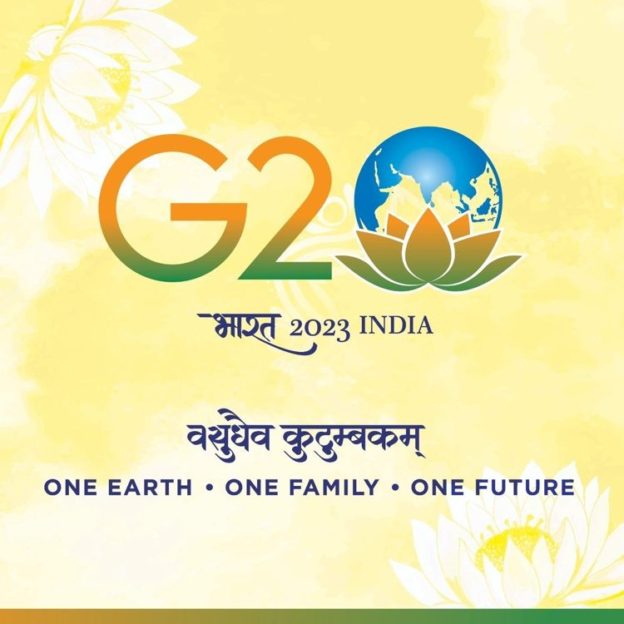India is expected to make all attempts to lobby for making Space as a formal element of G-20 discussions, for future.
During 17-18 April 2023, G-20 Space Economy Leaders Meeting was held at Shillong, Meghalaya. This was the precursor meeting for the proposed G-20 Space Economy Leaders’ Meet (SELM) in Bengaluru during Jun 6-7, 2023. This meeting would be attended by the G-20 Heads of Space Agencies and the Heads of G-20 Space Industries. The purpose behind the meeting in Meghalaya was to create awareness among the wider audience about space issues, specifically in regards to space economy.
The Group of Twenty (G-20), a group of the world’s major economies was founded during 1999. Space economy has been a relatively new entrant to the G-20 system. The concept of space economy was introduced in G-20 only during 2020. India is expected to make all attempts to lobby for making Space as a formal element of G-20 discussions, for future. The Shillong meeting was used by India towards highlighting this need. This meeting was attended by theAmbassadors/High Commissioners and senior diplomats of G-20 grouping.
The recent 4thSELM precursor event was arranged by Indian Space Research organisation (ISRO) under the theme: “SELM: towards a new space ERA (Economy, Responsibility, Alliance)”. During this meeting a Round table consultation was held to discuss the perspectives of G-20 countries on Space Economy and the present state of space economy in the respective countries. Various governments supported the idea of needing to boost the space economy. The Indian perspective was offered by the Secretary, department of space.
It could be said that this is the correct time in history, when the importance of space economy is growing in its stature. An American company, Space Exploration Technologies Corporation, which is famously known as SpaceX came on the horizon during 2002. It took some years for the company to get established. The company started witnessing growth around 2015 (did its first commercial mission for a private customer in 2013). Their famous Starlink constellation for providing space based internet services became operational around 2020. In the same year they became the first private company to send humans into orbit. From space tourism perspective companies like Virgin Galactic and Blue Origin made their presence felt around the same year. The Ukraine war demonstrated how even commercial satellites could help militaries. All this indicates that globally the growth in space economics has started happening only during the last seven-eight years.
As per some reports the global space economy hit $469B in 2021and almost similar trends continued during 2022. There are estimates that in a decade’s time, this value would be around $740B. In the long-term, the space economy is expected to become a $1 trillion economy. Investments are expected to come both in the private and public sector. Majority of the projects could happen under the banner of public-private-partnership (PPP). The growth is expected in the areas like satellite manufacturing, launch services and the establishment of ground segments.
For all these years, space has been a potent incubator for innovation and many inventions have happened in various fields of space technologies. Now the time has come to consolidate on new technologies, which also have much relevance for space. From missions to low earth orbit (LEO) to missions to Moon and Mars, the expense for space activities is getting bigger and bigger. Yesteryear ideas like on-orbit servicing of satellites, developing space debris removal technologies, space hotels, technologies for space situational awareness, space based solar power are maturing very fast. All this is expected to boost the space economy in a big way.
For a long time scientists have been known to be working towards reducing the size and weight of satellites. Today, satellites can collect, investigate, and transfer much larger stores of data than they could just five years ago. More work is happening in this field towards achieving further efficiency. Efforts are happening towards reducing the costs for heavy launches in LEO. Already, there has been significant reduction in the per kg costs for carrying weight in the space. Also, major multilateral programs have been planned towards putting humans on the Moon and Mars. All this is good news for global space economics.
Also Read: India reaches out to Quartet countries to ensure safety of nationals in Sudan
Technologies like 3-D printing, artificial intelligence (AI), and internet of things (IoT), new materials and autonomous robotics are helping the space industry to innovate and achieve more. India has opened up its space sector for the private industry through the 2020 Space Sector reforms. Also, a nodal entity called Indian National Space Promotion and Authorisation Center (IN-SPACe) has been created for promoting and authorising private industries participation. India understands that there is a great demand for space-based services, which have major commercial potential. India has evolved a space policy, which mandates ISRO to do hand holding of the start-ups. At the Shillong G-20 meet it has been argued that the increased private industry participation will eventually result in increased contribution of India in the global space economy.
India needs to use the G-20 forum to push the commercial agenda for space. There are seven spacefaring nations who are a part of G-20. Russia has been collaborating with the US for a long in the space domain in spite of their terrestrial differences. However, now there is an increasing discomfort owing to the Ukraine crisis. The US has a policy for not allowing NASA to collaborate with China. Luckily, India is dealing with both Russia and China towards developing projects in the space domain under the BRICS arrangement. But, at the same time all the four ASAT (anti-satellite) powers are part of the G-20 grouping. There are concerns about each other’s counter space capabilities. Also, it is a fact that the Space economy needs responsible behaviour in space.Hence, India needs to do some intelligent manoeuvring for ensuring success for the June 2023 SELM gathering.
https://www.financialexpress.com/business/defence-g-20-and-space-economics-3054198/





